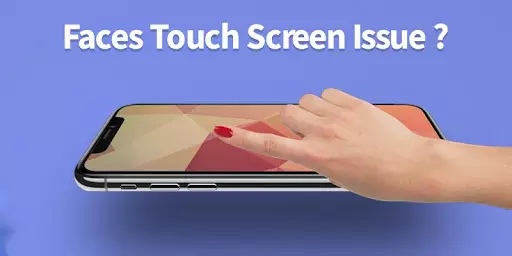Are you having trouble calibrating your iPhone touch screen? Perhaps you have tried adjusting the screen brightness and position, but the issue persists. Don’t worry, there is a solution. In this article, we will show you how to calibrate your iPhone touch screen using a third-party app.
How To Calibrate iPhone Motion Sensor (Simple)
How to Calibrate Your iPhone Touch Screen
If your iPhone touch screen is not working properly, you may need to calibrate it. Calibrating your iPhone touch screen will ensure that all the buttons work as they should and that the touchscreen is accurate. Follow these simple steps to calibrate your iPhone touch screen:
1. Open the “Settings” app on your iPhone and tap on “Display & Brightness”
2. Under “Display,” tap on “Accessibility”
3. Under “Accessibility Options,” tap on “Calibrate Screen.”
4. Follow the on-screen instructions to calibrate your iPhone touch screen.
Also Read:- Steps to Download Instagram Voice Message- Save/ Share/ Delete
The Benefits of Calibrating Your Touch Screen
Touch screens are amazing devices, but like any electronic device, they can be improved with calibration. Calibrating your touch screen can make it easier to use, increase your accuracy and speed, and improve your overall interaction with your device. Here are some of the benefits:
1. Increased Accuracy and Speed: Calibrating your touch screen can help you interact with your device more accurately and quickly. By improving your touch screen’s calibration, you can reduce the number of errors you make and speed up your workflow.
2. Improved Mobility and Comfort: Calibrating your touch screen can improve your mobility and comfort. By reducing the number of errors you make and improving your touch screen’s calibration, you can reduce the amount of time you spend using your device and increase your comfort.
3. Increased Functionality: Calibrating your touch screen can improve the functionality of your device. By calibrating your touch screen, you can improve the accuracy of your inputs, increase the speed of your interactions, and improve the overall user experience.
If you’re looking for a way to improve your device’s performance, calibrating your touch screen is a great option. By improving your accuracy and speed, you can increase your productivity and efficiency. Calibrating your touch screen is a simple and easy way to improve your device’s performance and usability.
How Often Should You Calibrate Your Touch Screen?
iPhone touch screens require calibration every time they are used in a new location. This ensures that the touch screen works correctly and responds as expected. This calibration can be done automatically by your iPhone, or you can manually do it yourself.
To calibrate your iPhone touch screen:
1) Open Settings on your iPhone.
2) Under “General”, tap “Accessibility”.
3) Under the “Touch Screen” heading, tap “CalibrateTouch”.
4) If you’ve set up your iPhone to automatically calibrate, your iPhone will begin the calibration process. If you’d like to do the calibration yourself, follow the on-screen instructions.
5) Don’t let your iPhone go out of range again while the calibration is in progress.
6) When the calibration is complete, your iPhone will display a message indicating that the calibration is complete.
The Right Way to Calibrate Your Touch Screen
calibration is the fine-tuning of a device to achieve an accurate result. In the context of an iPhone touch screen, calibration is necessary in order to achieve the optimum response from the device. This can be done through a number of methods, and the most accurate results are generally achieved through in-person testing.
There are a few steps that are necessary in order to calibrate an iPhone touch screen. The first step is to ensure that the device is level and properly supported. Next, the screen should be calibrated to the device’s native resolution. This is necessary in order to ensure that the touch screen is correctly registering user input. Finally, calibration should be performed on a regular basis in order to ensure that the touch screen is always operating at its best.
If you are in need of professional calibration services, please don’t hesitate to contact us at [phone number]. We would be happy to provide you with a free consultation and guide you through the process of calibration.
Troubleshooting Touch Screen Calibration Issues
I am a professional in the field of technology, and I can help with your iPhone touch screen calibration issues.

There are a few things you can do if your iPhone touch screen isn’t working the way it should. First, you can check to see if your phone is calibrated properly. If not, you can adjust the calibration settings. Finally, you can try to fix the issue by performing a repair on your phone. Let’s take a look at each of these options.
1. Check to see if your phone is calibrated properly
First, you’ll want to make sure your phone is calibrated properly. To do this, go to Settings and then General. Next, tap on Display and then Calibrate Display. Tap on the Calibrate button and then follow the on-screen instructions. If your phone is properly calibrated, the screen should be accurate and responsive.
2. Adjust the calibration settings
If your phone isn’t calibrated properly, you can adjust the calibration settings. To do this, go to Settings and then General. Next, tap on Display and then Calibrate Display. Tap on the Calibrate button and then follow the on-screen instructions. If your phone is properly calibrated, the screen should be accurate and responsive. However, if it’s not, you can adjust the calibration settings to make the screen more accurate.
Conclusion
After calibrating your iPhone touch screen, you should find that your screen is more accurate and responsive.



